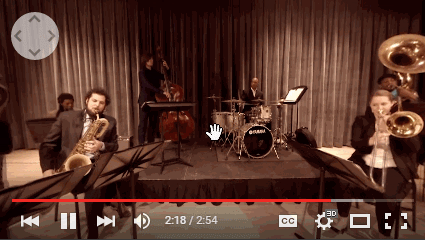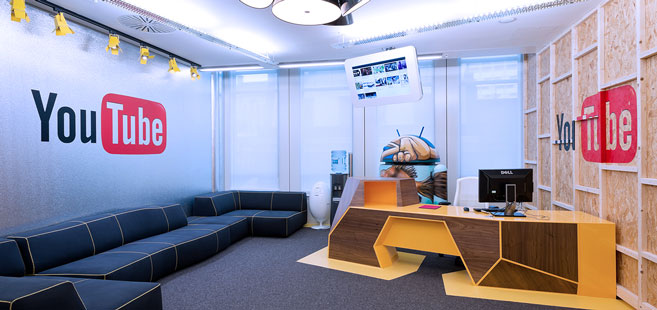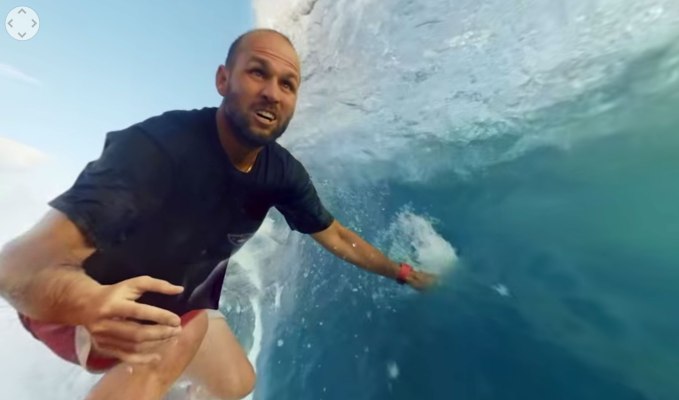YouTube will today begin supporting 360-degree live streaming on its service, confirming reports from earlier this year stating that such a feature was in development. One of the first videos to take advantage of this more immersive format will be this year’s live stream from music event Coachella, where select performances from the festival will now be live streamed in 360 degrees.
Also new today is support for spatial audio for on-demand YouTube videos, the company says.
With this announcement, YouTube is the first to launch 360-degree live streaming and spatial audio at scale, we should note.
Spatial audio means playing sounds the same way people actually hear — or as YouTube explains, it’s about letting you listen as you do in real life — “where depth, distance and intensity all play a role,” writes Neal Mohan, Chief Product Officer for YouTube, on the company blog.
Google had already been rolling out support for spatial audio elsewhere in its product line, including most importantly, for its VR platform, Google Cardboard. In January, it made it possible for developers to support this option in their own apps, with updates for the Cardboard SDKs for Unity and Android, for example. So it’s not surprising to see the technology being expanded on YouTube.

At launch, however, spatial audio is only available for on-demand videos, not live videos. That means streams like the Coachella concert won’t include this option. The feature is also limited to Android smartphones used with headphones. (Google published a sample playlist here.)
The bigger news today, though, is the launch of 360-degree live streaming.
For YouTube creators, all that’s required to take advantage of this new feature is a camera that supports the technology. Other than that, there’s no change to the current live streaming process, YouTube tells us.
YouTube additionally announced today the support of 1440p 60fps resolution for live streams on its service. Live streams at 1440p have 70 percent more pixels than the standard HD resolution of 1080p, to give you an idea of the nature of this improvement. This not only offers a great experience for the new live 360 streams, which are best enjoyed at high resolutions and high frame rates, but will benefit video game streams, too. The latter will benefit YouTube’s Twitch competitor, YouTube Gaming.
Meanwhile, from the end-user perspective, there’s no extra technology or headsets required to watch 360-degree live streams — they’re available on any device, including desktop, tablet, iOS or Android. That makes them more accessible than the higher-end VR technologies currently in development, which require hefty upfront investments on consumers’ side and still struggle with a lack of content.
(Above: an example of a 360 degree video)
To make support for both 360 live streams and spatial audio possible, YouTube has been working with camera and software vendors, including VideoStitch, Two Big Ears, ALLie, Vahana VR and Orah 4i, it says.
In addition, today YouTube says it’s also opening up its “Live API,” which will allow any camera manufacturer interested in 360 the ability to use YouTube’s Live Streaming API to send 360-degree live streams to the service. This addresses the questions raised around industry adoption — that is, how YouTube plans to support the different manufacturers and solutions on the market today.
Of course, not all video creators who want to experiment with either 360-degree live streaming or spatial audio can afford to invest in their own equipment. That’s why YouTube says creators will be able to try the technologies at YouTube Space locations.
These are the studios YouTube runs in cities like L.A., New York, London, Tokyo, Paris, Berlin and elsewhere, where creators can produce content, learn new skills and collaborate with others in their local video communities. YouTube says 360-degree live streaming and spatial audio will be available at all its Space locations worldwide.

These launches are significant for YouTube, which is betting big on new technologies as a means of attracting a wider audience to its site in an age where more users than ever are consuming YouTube’s content, especially on mobile. The company said in July that watch time was up 60 percent year-over-year, and mobile viewing had doubled.
The company’s investment and speed to launch with these technologies is also notable. It first debuted support for 360-degree videos last March, and the feature has since been adopted by a number of musicians, athletes and brands, the company points out today. It also showed off its own VR camera rig, the Jump VR video camera, at its 2015 I/O conference, then put it directly in the hands of creators later in the year.
This November, it brought VR videos (360-degree videos with depth perception) to Google Cardboard, and made all YouTube videos compatible with Cardboard.
While all these technologies offer a new means of telling stories through video, they’re very new. That means their ability to boost user viewing metrics in terms of engagement and minutes watched in the long-term still remain unproven. That said, there’s definitely growing consumer interest in 360-degree videos and VR. For instance, Google said this January it’s shipped 5 million Cardboard viewers to date.
Starting today, anyone will be able to do live 360-degrees on YouTube, the company says. Coachella will happen on the weekend, and will be the first high-profile example of the new live streams on the site.
